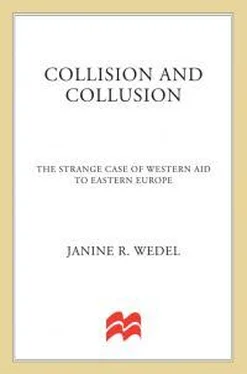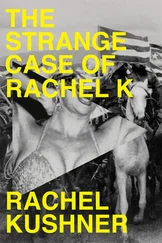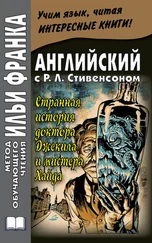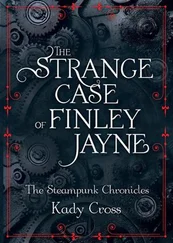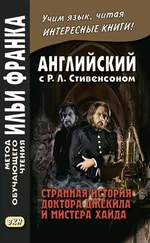44. Cited in John Harper and Janine R. Wedel, Western Aid to Central and Eastern Europe: What We Are Doing Right, What We Are Doing Wrong, and How We Can Do It Better, East European Studies Occasional Paper, no. 41: Woodrow Wilson International Center for Scholars, September 1995, p. 25.
45. Interview with Jan Czerniawski, January 13, 1992.
46. Leonid Abalkin, “Evaluation of USA Technical Aid in the Course of Democratic and Economic Transformations in Russia,” paper presented at The George Washington University, February 26, 1996, pp. 12-13.
47. Interview with Mykola Horkusha, deputy chair of the Department for Business Support, Ministry of the Economy, August 22, 1995.
48. Interview with Alexander Paskhaver, August 18, 1995.
49. Pavel Bratinka, “Assistance Brings Greater Understanding,” G24 Newsletter, Prague Centre for Foreign Assistance of the Ministry of the Economy, Prague, Czech Republic, December 1993.
50. Interview with State Secretary Gabriel Palacka of the Slovak Ministry of Administration and Privatization of National Property, July 4, 1994.
51. Interview with Jiří Hodík, coordinator of the PHARE privatization program in the Czech Ministry of the Economy, cited in Janine R. Wedel, “The Unintended Consequences of Western Aid to Post-Communist Europe,” Telos, no. 92, summer 1992, p. 136.
52. Daniel Guttman, Contracting for Government, Washington, D.C.: distributed by the National Academy of Public Administration, January 1997; and numerous conversations with Daniel Guttman, an expert on government contracting for the performance of public functions, 1998-2000.
53. Under the system known as nomenklatura, responsible positions in all spheres of government had to be approved by the Communist Party, creating a tangle of loyalties and favoritisms that precluded broader political and social participation. The nomenklatura had the power to accept or veto candidates for any state job and asserted a final voice over responsible positions in all spheres, from police and army posts to factory management and school principalships, on the basis of Party loyalty, not ability or qualifications.
54. For further description of such arrangements, see, for example, Connie Squires Meaney, “Privatization and the Ministry of Privatization in Poland: Outsiders as Political Assets and Political Liabilities,” University of California at Berkeley, Center for German and European Studies Working Paper, April 1993; Jadwiga Staniszkis, “Political Capitalism in Poland,” Eastern European Politics and Societies, vol. 5, no. 1, winter 1991, pp. 127-141; and Anthony Levitas and Piotr Strzałkowski, “What Does ‘Uwłaszczenie Nomenklatury’ (Propertisation of the Nomenklatura ) Really Mean?” Communist Economies, vol. 2, no. 3, 1990, pp. 413-416.
55. Interview with Piotr Kownacki, deputy director of NIK, April 29, 1994.
56. Sheila Kaplan, “Conflicting Signals,” Legal Times, February 25, 1991, p. 22.
57. Interview with Paweł Samecki, July 26, 1994.
58. Any standard Western method applied in Eastern Europe can produce a huge range of estimates. One method, for example, assesses the book value, or cost, of a firm’s property. Even if the firm’s equipment is state of the art (which often is not the case), the supporting infrastructure—transportation and telecommunications systems—might not be. A factory in Indiana might be worth much more than a comparable one in Bulgaria because it is integrated into a well-developed infrastructure.
59. Antoni Kamiński, “The New Polish Regime and the Spector of Economic Corruption.” Summary of paper presented at the Woodrow Wilson International Center for Scholars, April 3, 1996.
60. Najwyższa Izba Kontroli (NIK), Zespól Analiz Systemowych, Informacja o Wynikach Kontroli Procesów Prywatyzacji Przedsięborstw Panstwowych: Częsz I, Warsaw, Poland: Najwyższa Izba Kontroli (NIK), Zespól Analiz Systemowych, June 1991.
61. Interview with Lech Kaczyński, July 14, 1999.
62. NIK (1991) report; “List of Firms Recommended by the MWGZZ for Analysis and Asset Valuations of Privatizing Firms,” document produced by the Polish Ministry of Foreign Economic Cooperation (Ministerstwo Wspólpracy Gospodarczej z Zagranica, or MWGZ), Economics Department; and interview with Jan Piotrowski of the Institut Koniunktur i Cen, Handlu Zagranicznego, November 25, 1991.
63. Najwyższa Izba Kontroli (NIK), Zespol Analiz Systemowych, Informacja o Wynikach Kontroli Procesow Prywatyzacji Przedsieborstw Panstwowych: Czesz I, Warsaw, Poland: NIK, Zespól Analiz Systemowych, June 1991, p. 31.
64. Interviews with Rozália Krizsa and deputy Antalfi Gyözö at Monor, November 7, 1991.
65. Interview with Anatol Lawina, April 28, 1994.
66. Polish government sources and conversations of January and July 1998 with anthropologist Lisa Anne Gurr, who spent two years studying restructuring and labor issues at Ursus. See also Lisa Anne Gurr, “The Unmaking of the Polish Working Class: Reform and Protest in the Ursus Mechanical Works, 1991-93,” Ph.D. dissertation, Northwestern University, 1998.
67. Polish government sources.
68. Interview of January 24, 1992 with Andrzej Polakowski, a deputy manager at Ursus; and conversations of January and July 1998 with anthropologist Lisa Anne Gurr.
69. Connie Squires Meaney, “Privatization and the Ministry of Privatization in Poland: Outsiders as Political Assets and Political Liabilities,” University of California, Berkeley, Center for German and European Studies Working Paper, April 1993, p. 27; and conversation with Kevin McDonald, July and August 1998.
70. Interview with Andrzej Polakowski, January 24, 1992.
71. Ibid.
72. Conversations with Lisa Anne Gurr, January and July 1998.
73. Sources include Andrzej Polakowski, interview of January 24, 1992.
74. Conversation with Kevin McDonald, July 2, 1998.
75. Conversations with Lisa Anne Gurr, January and July 1998.
76. Conversation with Kevin McDonald, July 2, 1998.
77. The average value of the EURO during 1999 was approximately 1.0653 (see International Financial Statistics Yearbook 1999, Washington, D.C.: International Monetary Fund, 1999).
78. “Znikające Euromiliony: Jak Wykorzstywano Pomoc UE dla Polski” (“Disappearing Euromillions: How EU Aid to Poland is Used”), Wprost, May 30, 1999, pp. 38-39; NIK, Informacja o Wynikach Kontroli Wykorżystania Pomocy Unii Europejskiej dla Polski, Realizowanej ze Srodków PHARE, Warsaw, Poland: Najwyższa Izba Kontroli: Department Gospodarki I Integracji Europejskiej, November 1998.
79. Development Economics Group/Louis Berger International, Inc., and Checci and Company Consulting, Inc., Final Report: Privatization Phase II Program Evaluation, submitted to AID, Washington, D.C., by Development Economics Group/Louis Berger International, Inc., and Checci and Company Consulting, Inc., July 30, 1993, pp. 31-33.
80. Christine A. Bogdanowicz-Bindert , Interim Report: IDA Assessment, commissioned by the European Union’s PHARE program, December 1993, p. 1.
81. “Znikające Euromiliony: Jak Wykorzstywano Pomoc UE dla Polski” (“Disappearing Euromillions: How EU Aid to Poland is Used”), Wprost, May 30, 1999, pp. 38-39; NIK, Informacja o Wynikach Kontroli Wykorżystania Pomocy Unii Europejskiej dla Polski, Realizowanej ze Srodków PHARE, Warsaw, Poland: Najwyższa Izba Kontroli: Department Gospodarki I Integracji Europejskiej, November 1998.
Читать дальше
